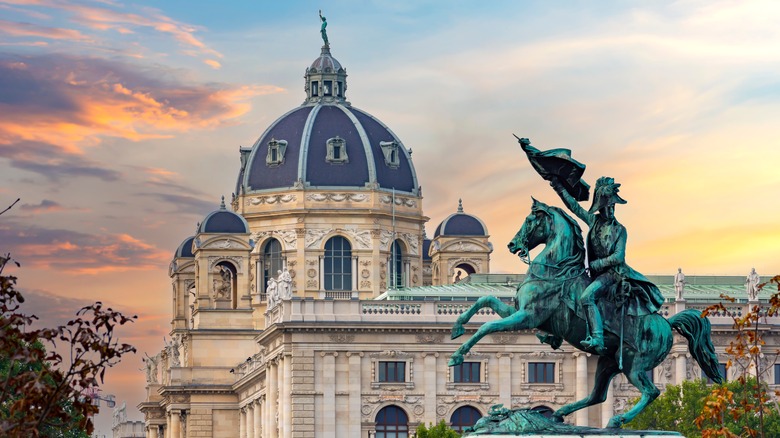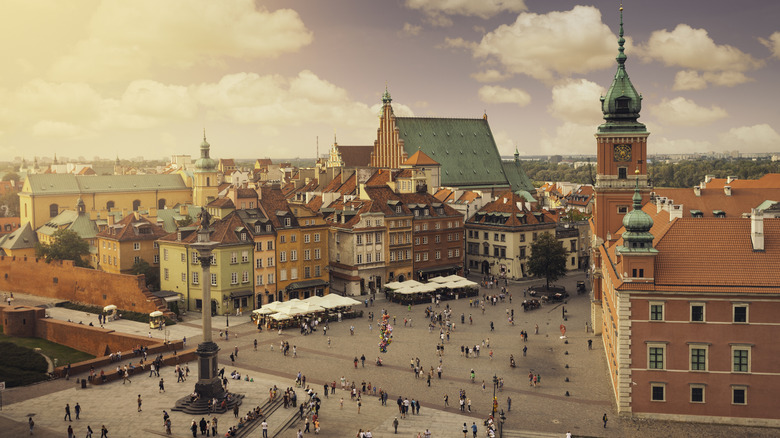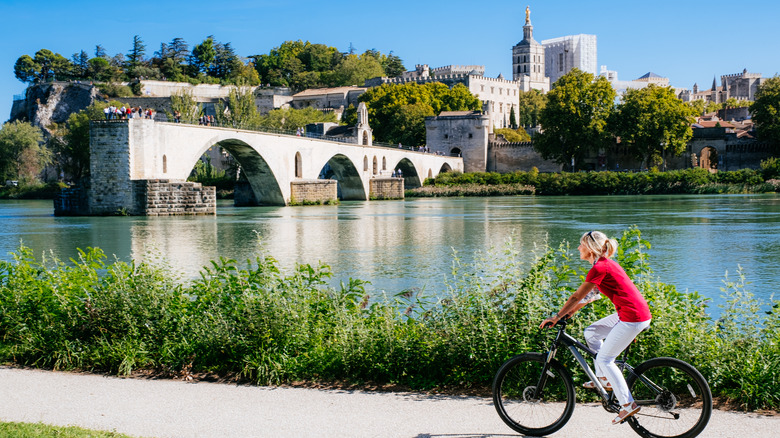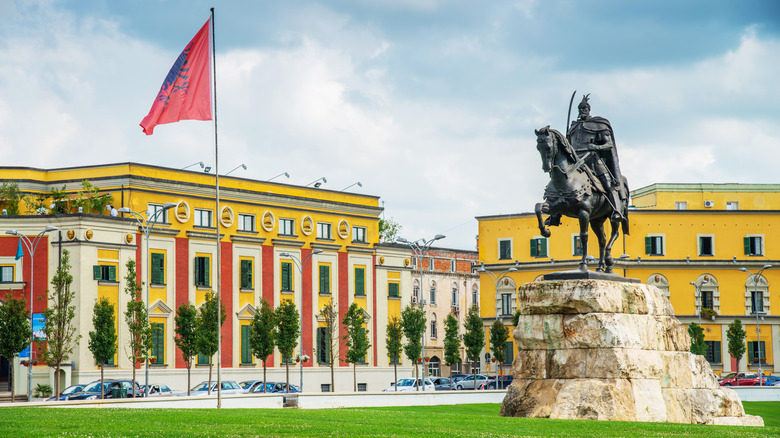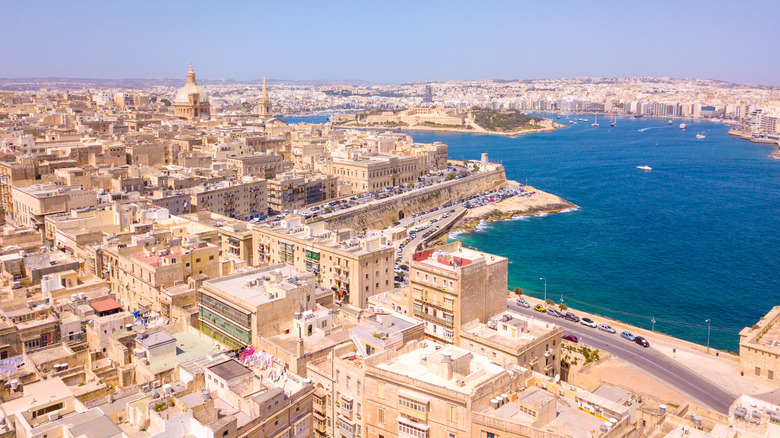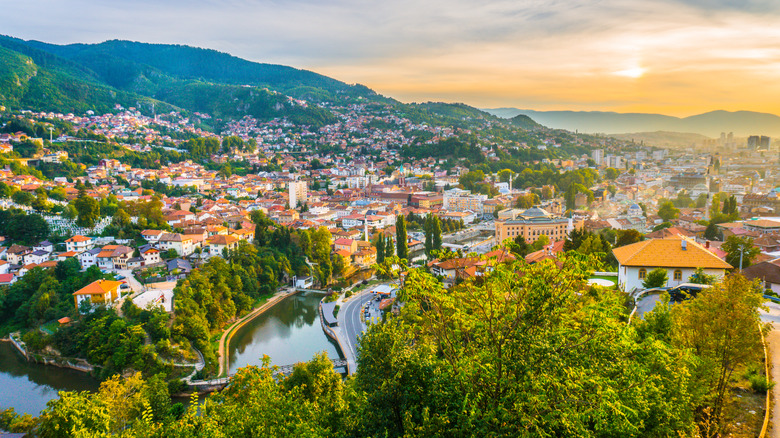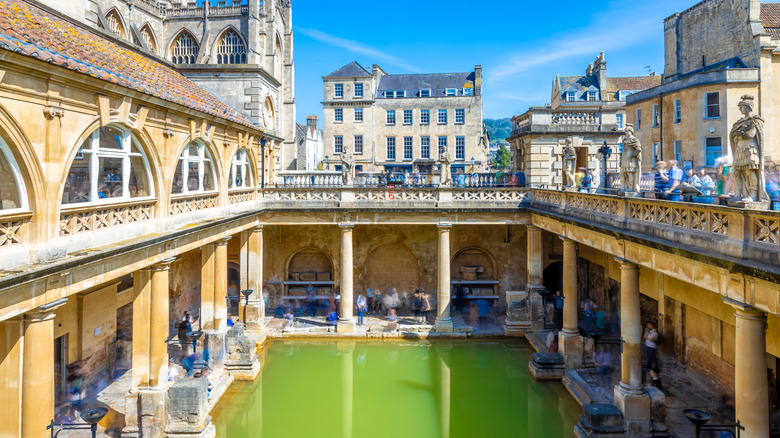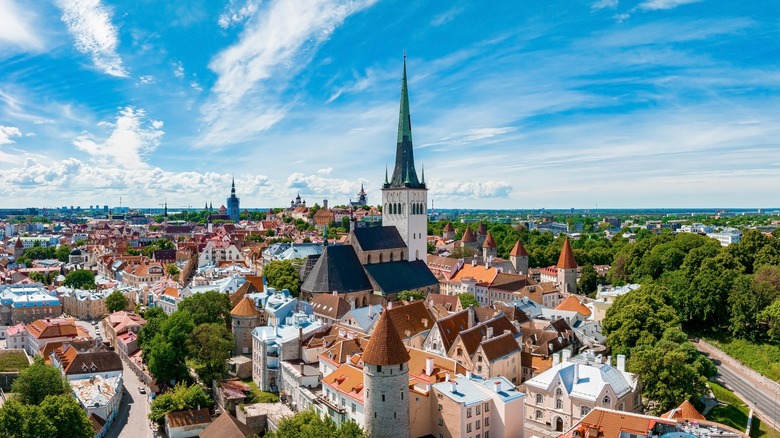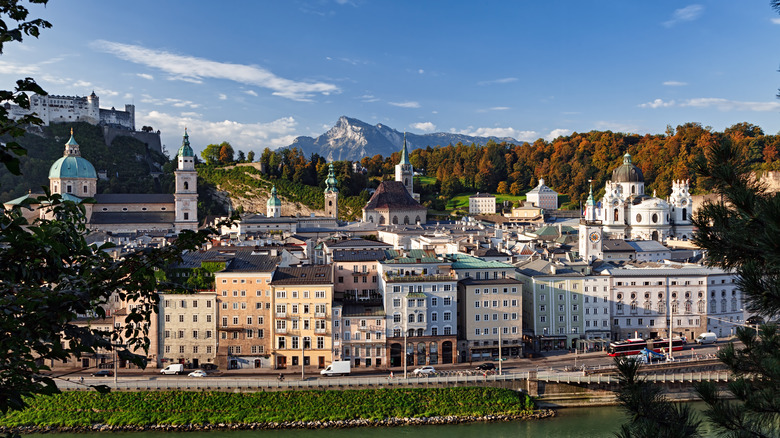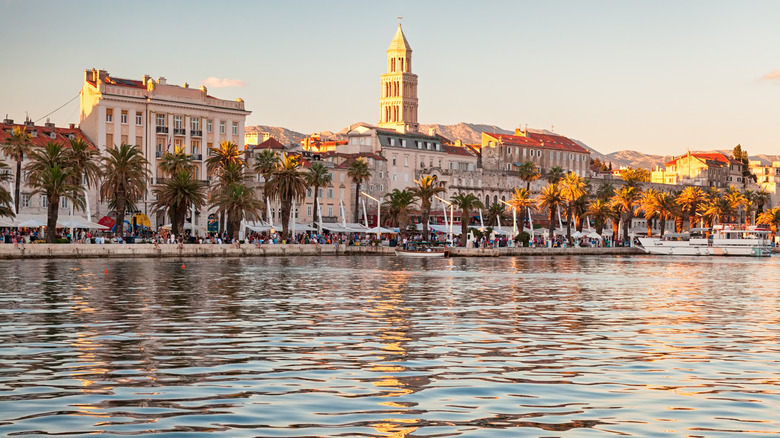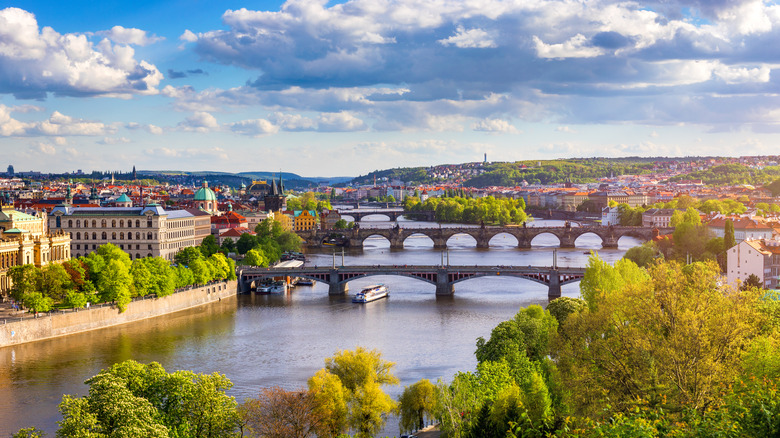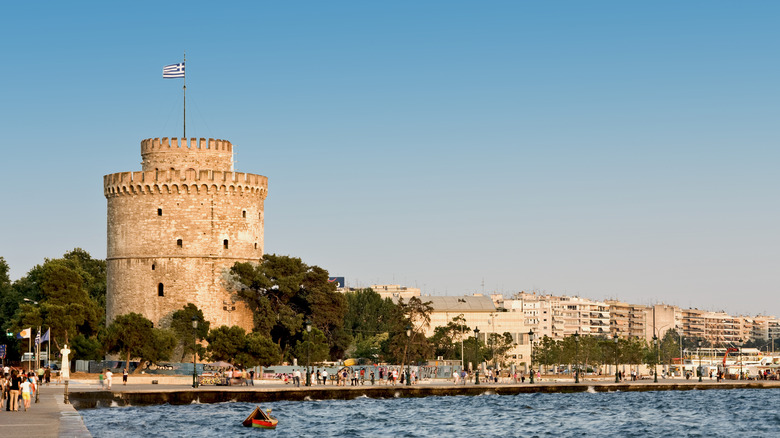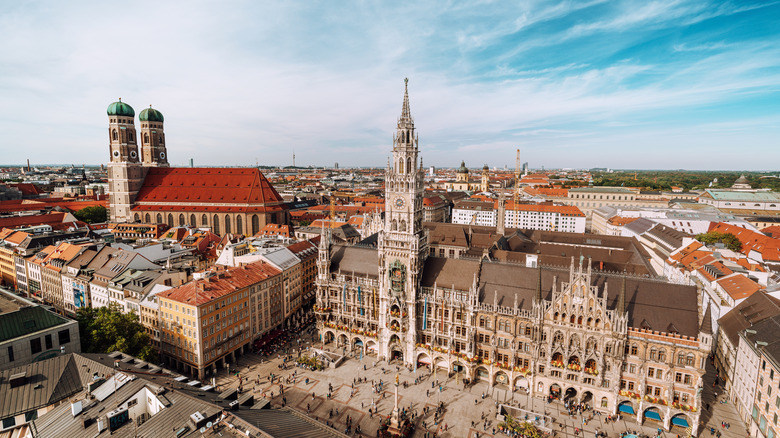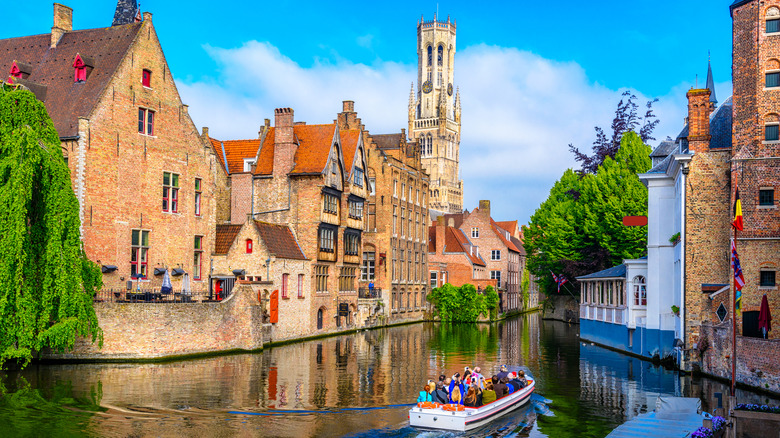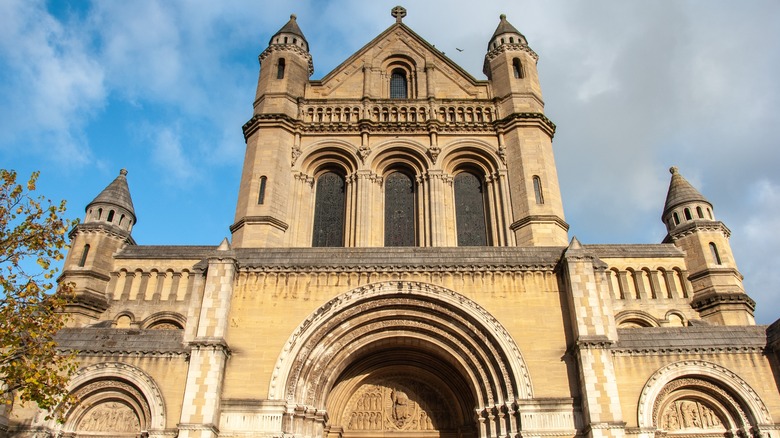Best European Cities For History Buffs To Add To Their Bucket List
As a continent so rich and diverse, it can be overwhelming for travelers to decide what cities to visit in Europe, particularly those obsessed with history. From Paris to Rome to Berlin and everywhere in between, there's no shortage of places to choose from. And while the capitals and other transport hubs are wonderful destinations, there is so much more to explore!
Over the centuries, numerous empires and kingdoms have tried to dominate Europe, to varying degrees of success. The impact this left on cities is undeniable and traces of the abundant legacies can still be seen today across the continent — and not just in the previously mentioned tourist centers. While the larger and more popular places might be more obvious choices to add to your itinerary, this article suggests spots to visit that may not have previously been on your radar. Here are 14 of the best cities in Europe for history buffs.
Warsaw, Poland
Originally a fishing village founded around 1300, Warsaw was a strategic choice by the dukes of Mazovia, due to its position on the Vistula River. It remained a small town, although an important one until the 15th century when the dukes moved to the city. Then, in 1569 when Poland and Lithuania united as a single federation, the lower house of Parliament moved to Warsaw. This accelerated the city's growth and relevance which only increased 25 years later when the royal seat moved from Kraków to Warsaw. It remained a political and economic powerhouse despite numerous invasions by the Swedes and in 1918 it became the capital of the newly sovereign country post-Polish independence. The city then suffered greatly in World War II with both the buildings destroyed and citizens missing. Under the Soviet Union, the city was rebuilt and maintained Communist Rule until independence once again in 1991.
Today, you can visit the Palace of Culture and Science for the perfect illustration of Soviet architecture. A gift from Stalin, it houses theaters and meeting rooms, and a view terrace. On the other hand, the Royal Castle from 17th century Warsaw, as well as Wilanów Palace, provide a view of a different side of the city's history. The National Museum and the POLIN Museum of the History of Polish Jews (located in the former Warsaw ghetto) add important context to any visit to Poland.
Avignon, France
Avignon's history goes back centuries, starting as a Phoenician trading post during High Antiquity. In the 14th century, the city really entered its golden era. From 1309 to 1377, Avignon held the papacy due to political unrest in Rome. This city remained a papal property during the Great Western Schism when the papacy was split between the two cities. In 1791, France annexed the city and destroyed parts of the "Palais des Papes" (Pope's Palace) in the process.
In 1995, UNESCO designated the entire historic center of Avignon as a World Heritage site. Today, you can still visit and marvel at the Gothic architecture of the Palais des Papes. Additionally, the entire town is filled with 16th and 17th-century homes and churches. The ramparts from the papacy period also still stand today, as does the Saint-Bénézet Bridge and its chapel. The bridge, made famous by the song "Sur le Pont d'Avignon" was the only one that managed, for a period anyways, to defy the current of the Rhône. However, it did not stand continually, and in 1680 was finally abandoned for the last time.
Tirana, Albania
Originally called Tërana by the Illyrians who settled the area, this region has a very old history. What became modern-day Tirana however has a contested origin story, with different versions — from being a sheep farmer's haven to being founded by Sulejman Pashe Bargjin, who established the first mosque and Turkish baths. For much of its history, the city hasn't been hugely important. That is until 1920 when it became the capital of newly independent Albania. This city was chosen for its location between the two main ethnic groups in Albania; the Ghegs in the north and the Tosks in the south. The former made up the majority of the political power until the Communist era.
The new capital's center was constructed as part of an agreement between King Zog and Italy, much of it designed by the architect Armando Brasini. Today, much of central Tirana still has a strong aesthetic of the Mussolini period. Tirana, despite ties to Fascist Italy, housed anti-fascist resistance during World War II, when the Communist Party took over and began to redesign the city yet again. Skanderbeg Square was completely reworked with the Old Bazaar and Cathedral torn down and replaced with communist-era buildings. However, in recent years, restoration has taken place to undo the Soviet changes. You can also visit Tirana Castle and the former Royal Palace, today the Presidential Palace, or just walk around the city and enjoy the eclectic mix of architecture.
Valletta, Malta
Malta's capital city is a fortified harbor town that was named one of the earliest UNESCO Heritage Sites back in 1980. Before its recent fame, though, Valletta held a long history that dates back to 1565 when Malta had the constant threat of Ottoman invasion. However, the Knights of St. John protected their home and founded present-day Valletta.
Built as a fortress to protect Christianity, the city was constructed in a unique Baroque style that has been methodically preserved. Quite unique at the time, the city used a grid system ahead of its time. The crown jewel is, of course, St. John'S Co Cathedral, which you can visit after wandering the city walls and other sites such as the Palace of the Grand Master (former residence of the Order of St. John) and the auberges where the knights lived.
Sarajevo, Bosnia & Herzegovina
Sarajevo is full of history, beyond what much of the West teaches in school. If the city is mentioned at all, it is usually a line or two about the Latin Bridge near Old Town, where Franz Ferdinand was shot and World War I began. Sarajevo's story, however, stretches way before the 20th century. The earliest mentions of the area date back to prehistoric times with the Butmir Culture, then the Illyrian tribes during the Bronze who tried to resist the Romans, only for the latter to overtake the city for centuries. What became modern Sarajevo however wasn't founded until 1462 when invaders from Turkey arrived. The Ottoman legacy can still be seen in the Old Town of the city with the numerous mosques and Ottoman graveyards with the distinct headstones you'll see in this part of the country.
Then, from 1878 to 1918 the Austro-Hungarian Empire annexed the country and city and built Europe's first electric tram system. You can still ride the streetcars around Sarajevo and admire the distinct design from this time, which still makes up much of the central buildings. During the Bosnian War, residents lived under siege for nearly four years. Today, much of the city has been reconstructed, but scars from shell casings can still be seen on many buildings and numerous museums and galleries are dedicated to preserving the history. You can also visit the old bobsled slides from the 1984 Winter Olympics.
Bath, England
Most famous for the healing properties of its water, Bath has been a wellness destination for many civilizations. Who initially discovered the benefits of water is a contested piece of history, but the Romans receive credit for building the baths and wellness culture the city is known for today. When the Romans left, the city fell into decline and then had a prevalent wool industry during the Middle Ages. That is until the 18th century when Richard 'Beau' Nash, Master of Ceremonies, decided to improve the city through development. The streets were cleaned and paved, lamps were erected to light public space and many of the Palladian Neo-classical buildings you can see today were built during this time.
This is also when the aristocracy began using the city as a preeminent wellness destination, which accelerated when the railway linked Bath with Bristol and London in the mid-1800s. Today, Bath is a UNESCO World Heritage site and you can visit the Roman temple and bath remains as well as see examples of 18th and 19th-century architecture in the Assembly Rooms, Queen Square, and Pump Room. It's also still the only place in the U.K. where you can bathe in natural hot springs.
Tallinn, Estonia
Considered one of the best-preserved Medieval cities, Tallinn has a long history of changing hands. The official founding of the city dates back to 1050 when a fortress was built on Toompea Hill. However, in 1219, the Danes took control and then sold the city in 1346 to the Teutonic Knights. Two centuries later out of fear of aggression from Russia and Poland, Estonia went under Swedish rule. Following the Great Northern War, Russia took control of the country and city and much of the population fled to Finland.
In 1920, Estonia finally gained independence, with Tallinn as its capital, only to be occupied by Nazi forces from 1941 to 1944. During this time and after many Tallinn residents were deported, many fled to Sweden, Finland, or North America. In their place, many Russian citizens settled in the city and still make up a large portion of the population today. In 1990, after the fall of the Soviet Union, Estonia gained independence again, and its capital city underwent a renaissance of sorts and is now a popular tourist population — particularly at Christmastime. Today, the Old Town, declared a World Heritage site by UNESCO in 1997, is a must-visit. Additionally, don't miss the restored fort on Toompea Hill, Old Castle, Gothic-era churches, and the Tallinn Town Hall from the 14th century.
Salzburg, Austria
Vienna and Innsbruck often get the most attention in Austria, but Salzburg is absolutely worth a visit! Like many cities on this list, the Romans founded this city, originally called Juvavum, back in 15 B.C. It then went through a period of ruin until 1077 when construction of Salzburg's fortress (which would become one of Europe's largest) began. Upon completion, the castle became the primary residence of Salzburg's archbishops. The city then underwent a couple of changes of hand, first being taken over by Bavaria, then the Holy Roman Empire, then the Austrian Empire when the archbishops finally lost power. During the Nazi occupation of World War II, the city was often targeted and suffered some damage but recovered quickly following the war.
Throughout each period, the city was changed until it became the cobblestoned, elegant, Baroque city of Salzburg that can be visited today. Walk or take the funicular up to the well-preserved fortress in this UNESCO site, wander the beautiful Old Town, or have coffee at one of the cafes that will make you feel like you're stepping back in time.
Split, Croatia
Split is most often used as a quick sunny weekend getaway or jumping-off point to Croatia's islands. But the city is rich in history, dating back to 293 A.D. when Emperor Diocletian built a palace for himself to retire in the city, where he lived until he later died.
Rulers who followed continued to use the residence for R&R before falling into disrepair for a few centuries before being ruled by the Venetians, Austrians, and even the French briefly. When Zadar became an Italian enclave in 1920, Split became the main city in Dalmatia. Then in 1944, both cities became part of Yugoslavia before Croatian independence in 1991. Today, Diocletian's Palace has now been turned into a living, breathing, museum where people live and conduct business and is also a UNESCO World Heritage site.
Prague, Czech Republic
The area that is now known as Prague has a long history of being inhabited, with archeological remains dating back to the prehistoric period. The Middle Ages is the time when the city really rose to prominence, in the 9th century it became the Přemyslid dynasty's seat of power, and trade and cultural developments really took off. Then, in the 14th century, Prague became the imperial capital of the Holy Roman Empire and constructed many famous landmarks that still stand today, including the Charles Bridge and St. Vitus Cathedral.
During the Renaissance, the area then became an intellectual hub and throughout the 18th and 19th centuries, more landmarks were built, as religious tensions rose between Catholics and Protestants. The uprising in 1848 against the Habsburg monarchy was felt here, but many artists and academics continued to live there despite the tensions.
At the end of World War I, when the Austro-Hungarian Empire fell, Prague became the capital of Czechoslovakia. The city was then occupied by Nazi Germany during WWII and then became part of the communist bloc, although many protests took place. Czechoslovakia became a democracy in 1989 after the fall of the Berlin Wall and then in 1993 split into the Czech Republic (of which Prague remained the capital) and Slovakia. Today, you can still visit many monuments from Prague's history.
Thessaloniki, Greece
Founded by King Cassander of Macedonia back in 316 B.C. and named for his wife, Alexander the Great's half-sister, Thessaloniki has quite the history. The Romans are responsible for building the harbor and other urban improvements here. When Constantinople (present-day Istanbul) became the capital of the Byzantine Empire, Thessaloniki became the second-largest city in Europe and a huge commercial center. This continued throughout the Crusades, when the Byzantines actually maintained control of the city, even as the capital was conquered. Under Ottoman rule, the castle was remodeled and many baths and mosques were constructed throughout the city.
Then, in 1912 following the First Balkan War, the city was where King George I of Greece was murdered, near the White Tower, which you can visit today. Thessaloniki was briefly the capital of Greece in 1916 when the prime minister, Eleftherios Venizelos declared it such in protest of the pro-German King Constantine I. During World War II, much of the city was destroyed, then later rebuilt into a much more modern version of itself. These days, you can still visit Byzantine and numerous churches, as well as the White Tower, and Roman remains such as the Arch of Galerius.
Munich, Germany
In German, Munich, or "München," translates to "home of the monks" as the city's origin is in the monastery founded in the eighth century. The German prince then granted the monks permission to build a market that grew into a city as it further developed. In 1175, the Wittelsbach dynasty took control of the area and ruled until 1918. The city was named the capital of Bavaria in 1506 and suffered periods of political unrest following the Thirty Years' War, particularly during Sweden's occupation.
Then, in the 18th century under the Habsburgs' rule, the city blossomed into the beautiful city it is today, with many Baroque-style buildings constructed. The city fell into unrest again following World War I, which nearly starved the entire population and was the location of Hitler's "Beer Hall Putsch" or failed coup d'état in 1923. While that attempt failed, Munich became the ideological center of the movement, and the first concentration camp, Dachau was built nearby. If you visit the city today, some buildings do remain from the 13th and 14th centuries, such as the Old Town Hall and the Frauenkirche Dresden. The Nymphenburg Palace and Hofbräuhaus Brewery, which date back to the 1500s, can still be visited as well. It's also worth it to pop into one of the many museums that tell the often dark history of the city.
Bruges, Belgium
The name "Bruges" is derived from the word "brugj", which translates to "mooring" as the area has a unique location, where numerous streams converge into a single one that leads to the sea. This favorable location for trade made it easy for the city to prosper in the Middle Ages as a huge international port. And later, Bruges became the host of the world's first stock exchange.
In the 15th century, it entered what is referred to as the "golden century" where the city profited from cultural and economic improvements, unlike any other time thanks to the support of the Dukes of Burgundy who rule Flanders. The luxury goods and art industries boomed during this time and the famous Town Hall was constructed, as were early-on embassies. Later, during World War I, it served as a base for German submarines but was left unscathed and the old town became a UNESCO site in 2000.
Belfast, Northern Ireland
Belfast is arguably the most storied city off-continent in Europe, known internationally as the place the Titanic ship was built. Founded in the 17th century by Sir Arthur Chichester who Anglicized the Irish "Béal Feirste," to mean the opening of the sandbar, which is a descriptor for the city's location. Later on in the 1600s, the population increased dramatically with the influx of French Protestants fleeing religious persecution.
Belfast became the capital of Northern Ireland in 1920 during the partition that split the country into the two parts that remain today. Then, in 1968 protests began to sweep across the country that lasted until the late 90s, known as "the Troubles." The fighting came to an end in 1998 with the Good Friday Agreement, which details the system in place today, but tensions still remain. In the city, you can visit Belfast Castle, the Titanic Belfast, and the Museum of the Troubles and Peace for a comprehensive understanding of Belfast's history.
